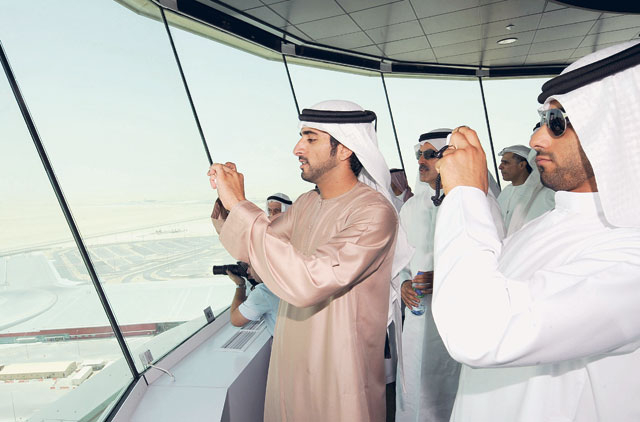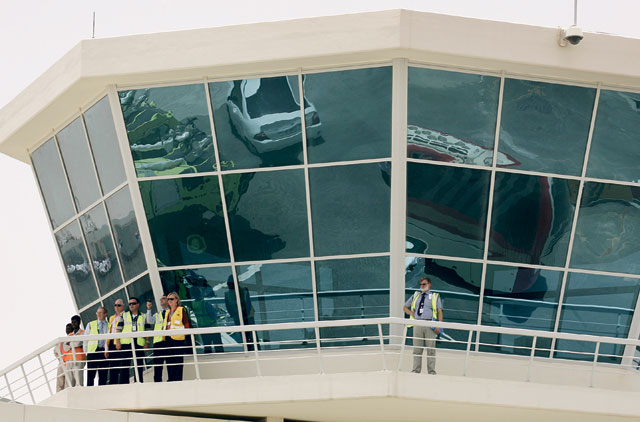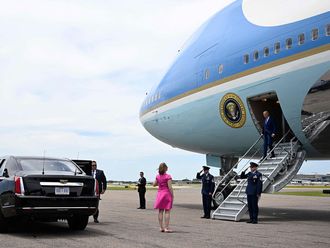Dubai: Al Maktoum International airport is a "strategic" move for Dubai, said Dubai World Central chairman Shaikh Ahmad Bin Saeed Al Maktoum as the new airport was officially declared open yesterday.
Cargo operations began Sunday when three airlines touched down at the airport in Jebel Ali.
Airport chiefs have said that 17 airlines have signed up to operate from the new airport and would begin operations by October.
His Highness Shaikh Mohammad Bin Rashid Al Maktoum, Vice-President and Prime Minister of the UAE and Ruler of Dubai, yesterday toured Dubai World Central-Al Maktoum International.
The airport has been designed to be the world's biggest greenfield airport, handling 160 million passengers annually and 12 million tonnes of cargo.
Passenger flights are due to begin next March when the terminal will be ready, airport chiefs said.
Shaikh Ahmad said that the airport was already receiving five to seven cargo flights a day.
He did not say when Emirates airline would be moving its cargo operations from Dubai International Airport, where it holds a key position as the carrier that has driven the airport's growth.
Mega development
Designed to be an "aerotropolis" — a city with all aviation intensive businesses within one master development — Dubai World Central has been described as the world's most expensive urban development project, valued at $33 billion.
While Phase 1 was due to be completed in the not-too-distant future, the next stages will proceed when the aviation industry revives.
Airport chiefs led by Shaikh Ahmad Bin Saeed Al Maktoum, President of Dubai Civil Aviation Authority and Chairman of Emirates Airline and Group, gave Shaikh Mohammed a briefing during the tour of the airport.
"I'm convinced of the economic success for the airlines and infrastructure of Dubai," said Dubai Airports chief executive Paul Griffiths.
Dubai Airports will operate Al Maktoum International.
Initially, the Jebel Ali airport is expected to operate one A380-capable runway, 64 aircraft stands, one cargo terminal with an annual capacity of 250,000 tonnes, and a passenger terminal designed to accommodate five million passengers per year as part of Phase 1.
Shaikh Mohammad ordered in 2005 the development of Dubai World Central-Al Maktoum International, which has been designed as the centrepiece of the 140 square kilometre development. The development will include six "clusters" linked to aviation and logistics.
The first runway was built surrounding the Dubai Logistics City, described as one of the key components of Dubai World Central.
Dubai International airport was built in 1960 and has handled more than 41 million passengers.
It is also undergoing the final phases of development with a fourth terminal and concourse under construction. Once complete, it will have a passenger capacity of 90 million, an airport spokesman said.
By 2025-30, Dubai's two airports could have a combined passenger capacity of 250 million — making Dubai the world's fourth biggest aviation hub.
From sea to air cargo
Airport operators have said they expected to see, with the development of cargo operations at Al Maktoum International, an increase in the transfer of goods from sea to air in Dubai.
The Jebel Ali port, a 30-minute drive from the airport, had been connected to the cargo operations by a corridor that will cut transfer time significantly.














